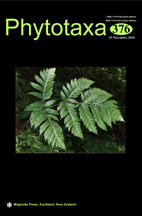Abstract
Several studies on the geographical limits and regionalization of the Neotropics have recognized this region as a biogeographical unit. Recent regionalization proposals recognize the existence of a Mesoamerican dominion within the Neotropics, extending from the northern portion of the Mexican Pacific coast into the lowlands of south-central Mexico and most of northern Central America (Guatemala, Belize, Honduras, El Salvador and Nicaragua). In this study, we assessed the biogeographical identity of the Mesoamerican dominion through the analysis of the geographical patterns of diversity of 356 species included in 28 genera and 16 families of plants, with a preferential distribution in the seasonally dry tropical forests of Mexico and Central America. Occurrence data were obtained from online databases (e.g., GBIF, SNIB, MEXU and TROPICOS) and refined using taxonomic and geographical information. We used the Biodiverse 2.0 program to obtain maps of species richness, centres of endemism and conducted analyses of similarity among areas. The analyses led to corroborate the geographical limits of the Mesoamerican dominion. With respect to the species with distributions that extend to America arid, the Brazilian sub-region and Florida and the Greater Antilles. From these analyses, we could identify for the Mesoamerican dominion two highly diverse areas in southern Mexico: the Balsas Basin (more than 60 species) and the Central Valleys of Oaxaca (28). We also identified seven areas of higher dissimilarity corresponding to river basins throughout the study area: Grande de Santiago, Armería-Coahuayana, Tepalcatepec (western Balsas), Eastern Balsas, Papagayo, Verde, higth Papaloapan (Tehuacán-Cuicatlán Valley) and Tehuantepec. The high values of dissimilarity in the Pacific watershed of southern Mexico are responsible for the high species turnover observed for the seasonally dry tropical forests in the Mesoamerican dominion.

